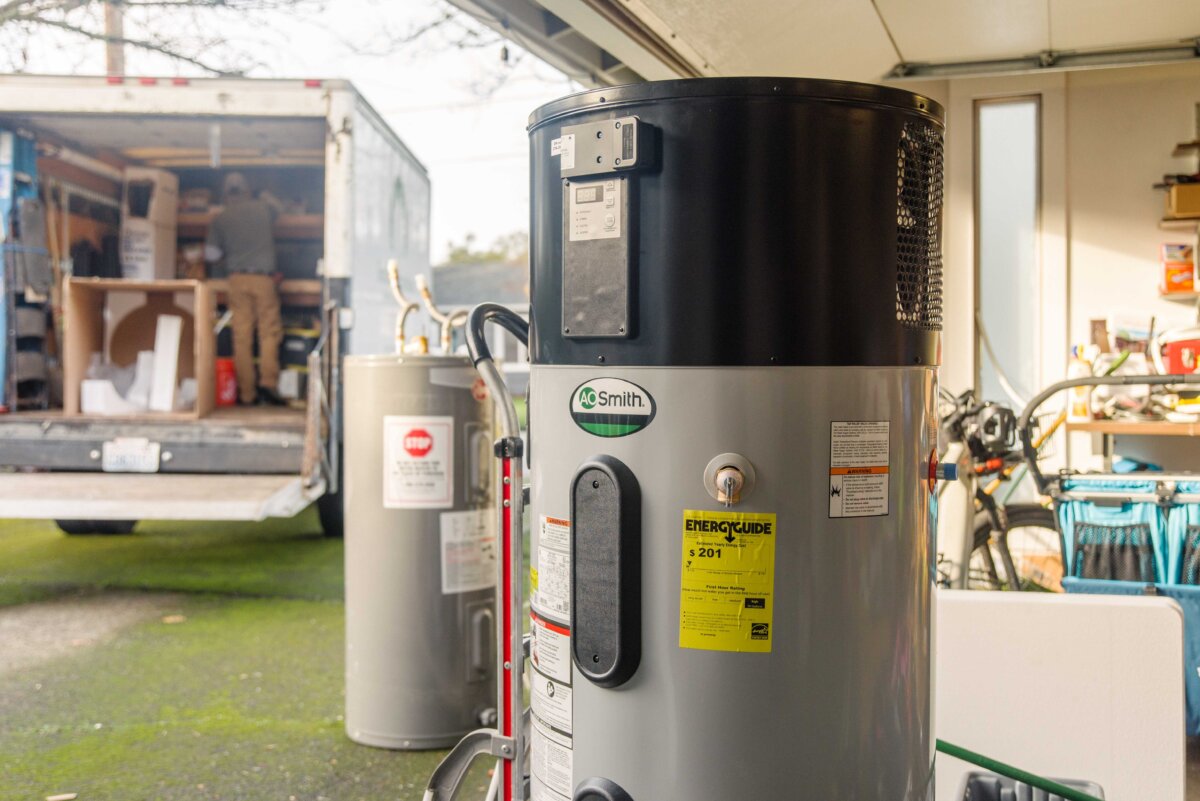As an installer, recommending a heat pump water heater (HPWH) to homeowners unfamiliar with anything beyond standard electric models might seem challenging. However, your best ally in highlighting the superior long-term savings of a HPWH might be right on the tank itself: the bright yellow EnergyGuide sticker.


Take, for example, this real-world example from a growing household that chose to upgrade their standard 36-gallon electric water heater to a 67-gallon HPWH. The EnergyGuide label on each water heater in the photos above shows how much energy it uses and how it compares to other electric water heaters. In this case, the label on the standard water heater says it will cost about $419 annually to operate, whereas the HPWH has a sticker saying it will cost just an estimated $201 per year. For the homeowner, this represented a drastic cut in annual water heating costs—even though the HPWH replacing it had almost twice the capacity!
Here’s why this matters:
As an installer looking to provide your customers with the best value, the EnergyGuide label is a persuasive tool to validate some serious savings claims. This sticker should empower you to recommend a HPWH and give your customers confidence that they are making the smarter choice—even when upsizing to a larger tank. It's an investment that pays for itself and continues to yield returns, reducing household energy expenses year after year.
By presenting these facts, you help demystify the cost of upgrading to a HPWH and reinforce the practicality of making the choice that will more than pay for itself. And if it sounds too good to be true, just refer to that bright yellow sticker.